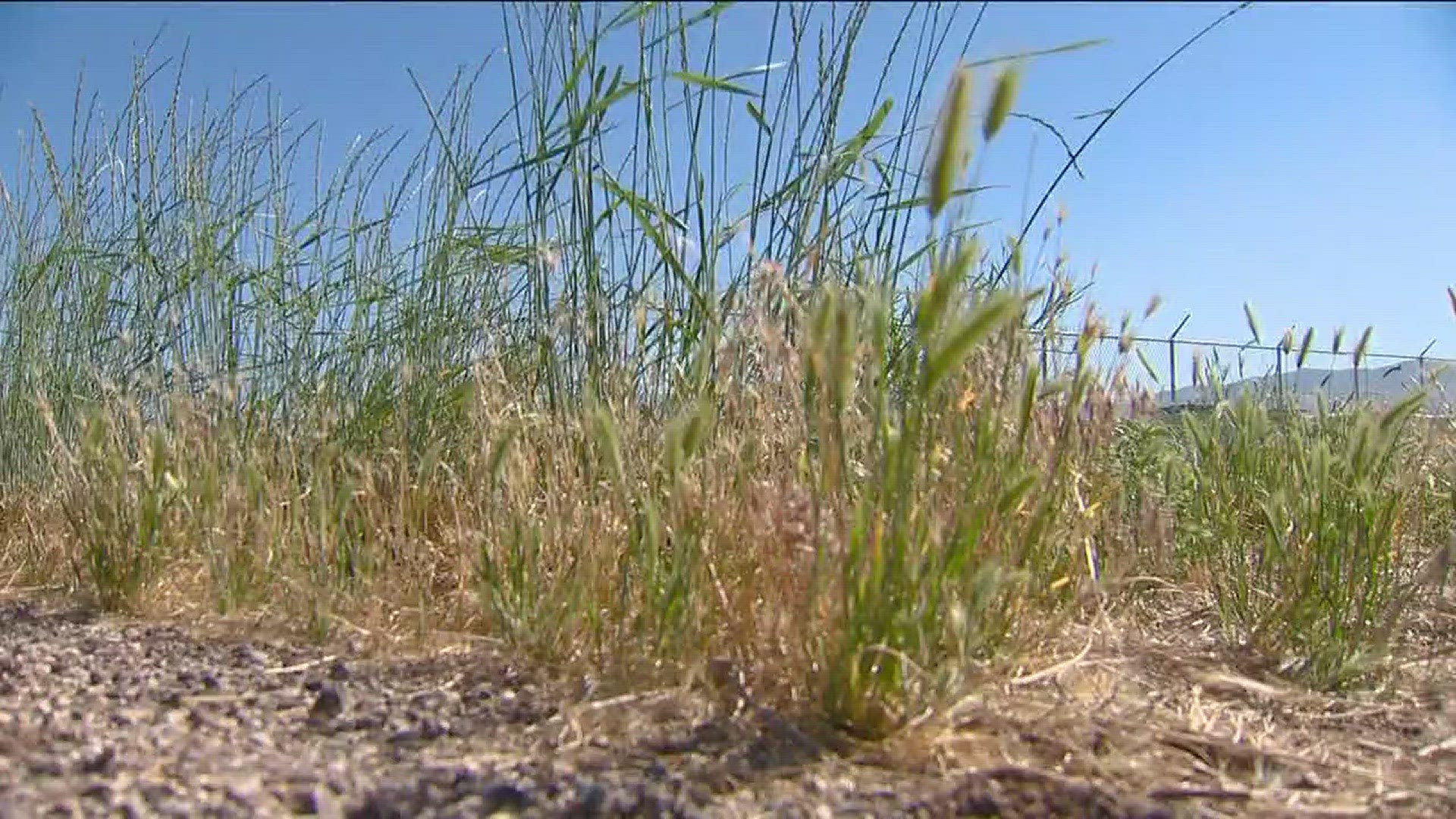Whether it’s hiking, camping, or fishing, most of us are spending a lot of time outdoors this time of year, and in most cases, we take our dogs along with us. But there’s something out in those open spaces that you might not have thought about, that could cause injury to your pet.
Roaming the foothills trails with our pets is one of the things we love about living in the Treasure Valley. But there are some hidden dangers you need to be aware of that could put your pet at risk.
"So the valley’s full of them, and all the places we like to play with our dogs are loaded with them," said Dr. Jeff Rosenthal.
We’re talking about the seedheads from a plant that is common throughout southwest Idaho: cheatgrass.
"These get up in between their toes and form these nasty abscesses," said Dr. Rosenthal. "They get in the ears and cause ear infections. They get in the eyes and cause ulcers in the eyes. And the valley, of course, is full of them."
After a wet winter and spring, wild grasses in the foothills are growing quickly, and something like cheatgrass can quickly turn into a devastating wildfire. It can also be a major issue for your pets’ health.
"The cheatgrass and all the various grasses that we have growing through the valley, they’re pretty hazardous to dogs, especially this time of year," said Dr. Rosenthal.
Dr. Jeff Rosenthal, with the Idaho Humane Society, says that almost every veterinary hospital in the valley sees lots of dogs and cats this time of year with cheatgrass and other seeds lodged in their bodies, causing infections in their ears, eyes and noses. and often it requires surgery to remove those seeds, a painful experience for the pet, and an expensive one for the pet owner.
Cheatgrass grows tall tassels, and as they dry out with the heat of the summer, these tassels start to break apart, and when a dog brushes up against them, it comes apart as a little dart, or arrow, that will actually stick into their skin and into other areas of their body.
"These little missiles, they’re just designed by nature to stick in things," said Dr. Rosenthal. "They’ll only move forward. They won’t ever move back unless they’re grasped and removed. They’re like the barbs on an arrow."
There are several places on a dog’s body where cheatgrass and other seeds can get stuck and cause injury.
"So, number one, is between the toes," said Dr. Rosenthal. "And up in between each of the toes is a little pocket up in the top here. And that’s where that grass seed will get lodged and start working its way in, right in between the webs here."
"The other common place is in the ear canal."
"It doesn’t matter if they have upright ears, floppy ears, a lot of fur, no fur. These little guys, when they run through the grasses, they’re just bombarded with hundreds and hundreds of grass seeds, and sooner or later one will get down in the ear canal and cause a lot of discomfort and infections. Usually that means a trip to the vet and have them removed."
The eyes are also a vulnerable spot.
"Dogs have a third eyelid. So if I push on the eye here, you’ll see that third eyelid pop up from the inside. So if your dog comes back inside and that third eyelid is elevated that way, there’s a really good chance there’s a grass seed stuck behind that gland."
"And then the nose. We see cheatgrass get up in the nose, and if your dog starts sneezing, just incessantly, over and over again, even sneezing up blood, there’s probably a grass seed stuck up in that nasal cavity."
"Then in the mouth as well, back in the tonsils. We get cheatgrass in there."
"Probably, cheatgrass and the other grass seeds, they can end up just about anywhere in a dog’s body."
So what can you do about it?
"So it’s hard to prevent, except that examining between your dog’s toes whenever you get back from a walk, and removing those things early rather than let them burrow in there. They’re pretty painful."
"So this time of year it’s just really good to be on guard and wary, and really look over your dog after every walk."
Cheatgrass isn’t just in the foothills. It can pop up in vacant lots and even in your own yard. And if you do see issues with your pets, be sure and get them to a veterinarian immediately.
Cheatgrass and other seeds don’t contain any toxins, but any plant material that gets stuck in an animals’ tissues can cause strong reactions and almost always leads to infection. So it’s best to see a veterinarian.
Cheatgrass is an invasive plant that is not native to North America. It was introduced in the 1800s by contaminated grain and soil on ships from Europe and Asia.
By the way, that little dog that was so good to let us handle her feet and face has been adopted, and there are many other cute dogs and cats waiting for a good home. You can find out more about adopting a pet by contacting the Idaho Humane Society.

